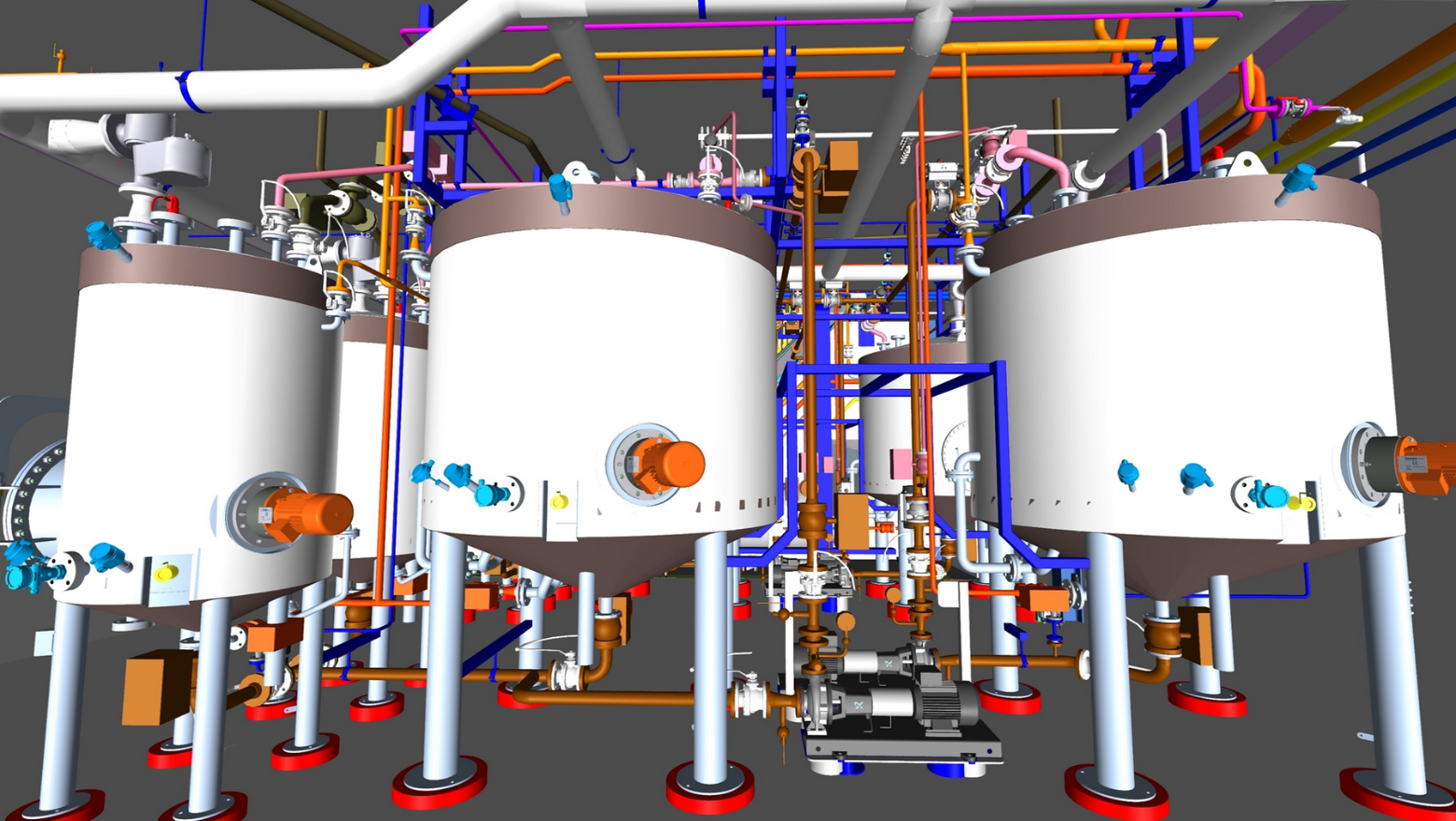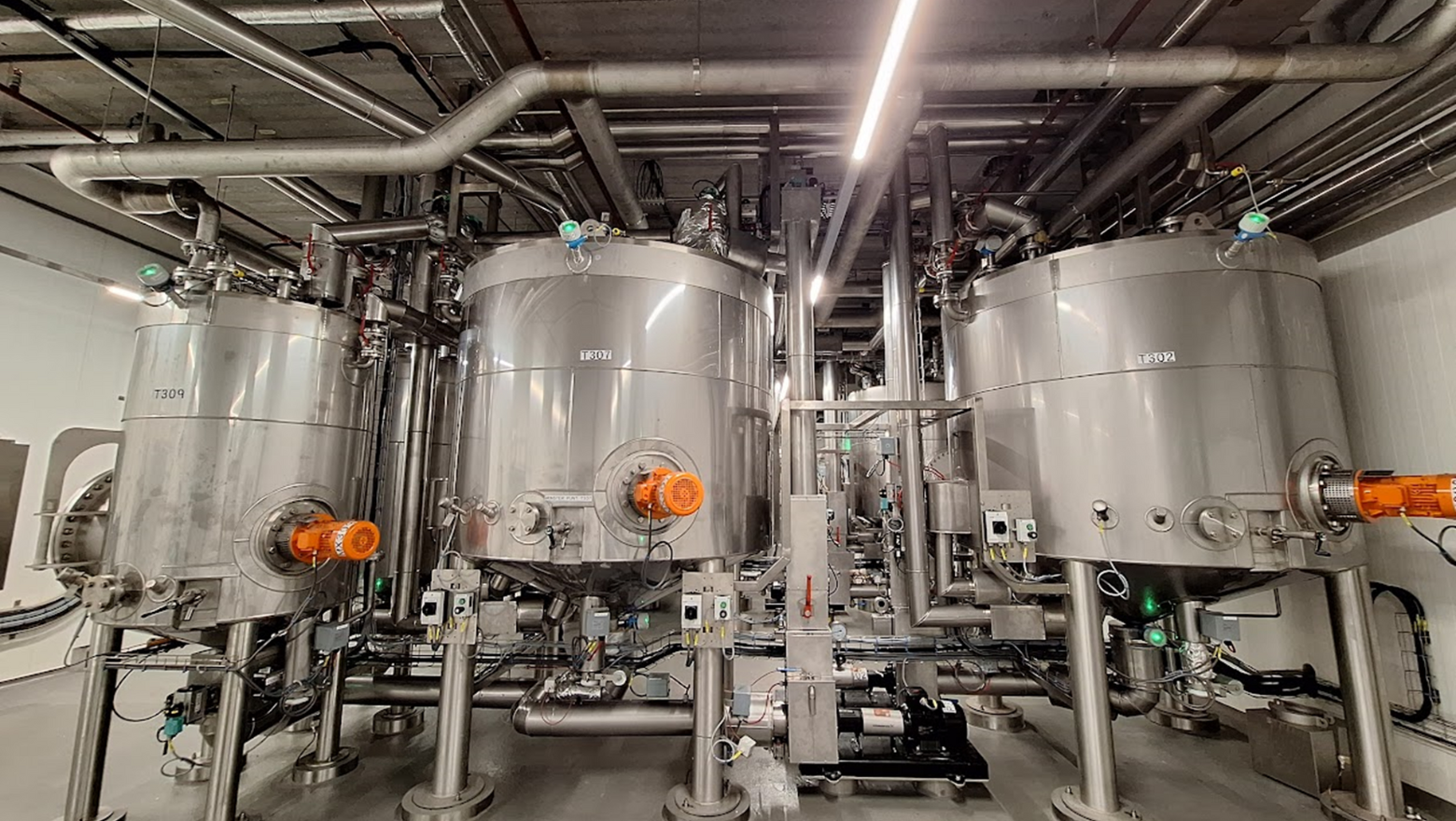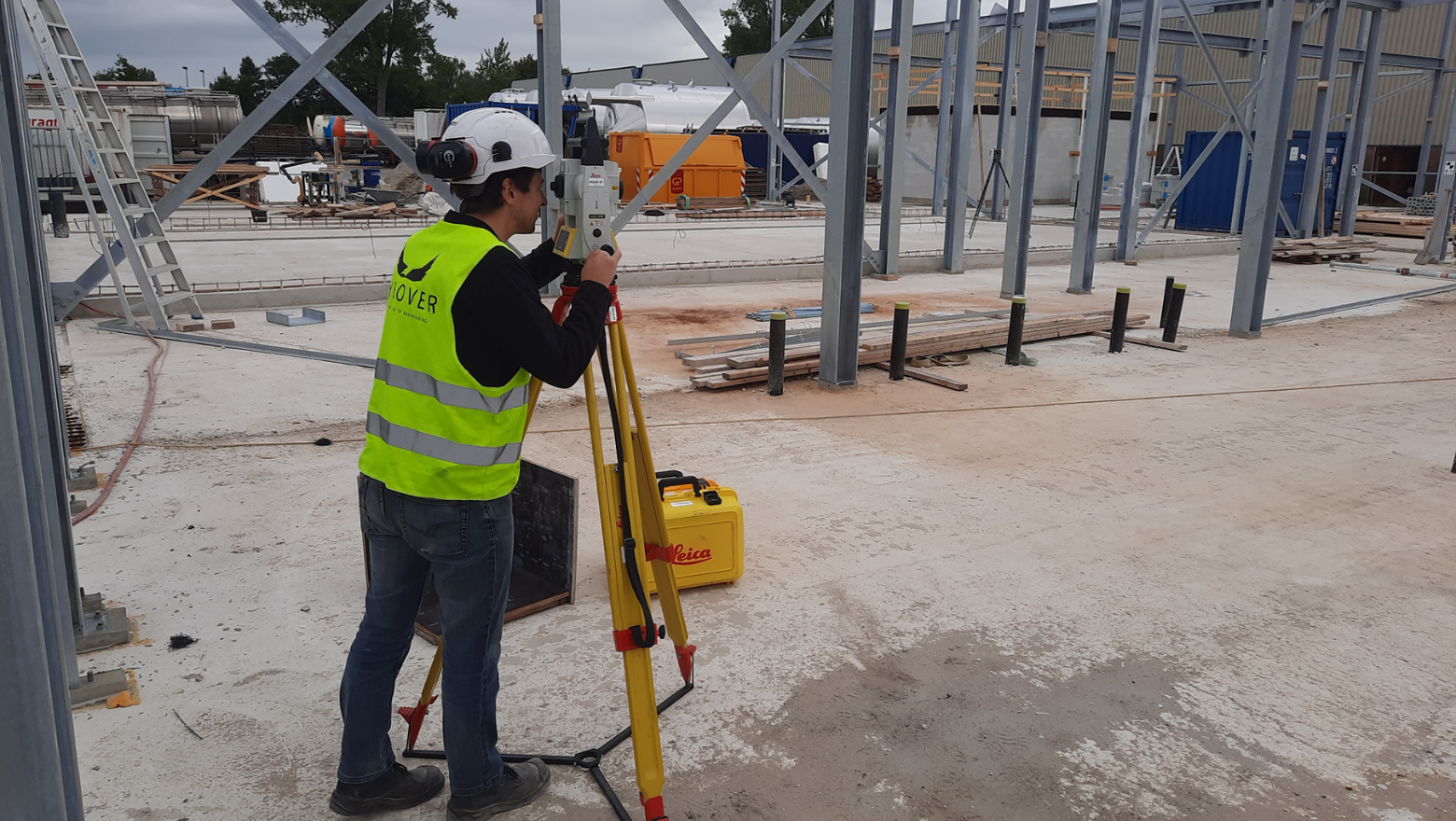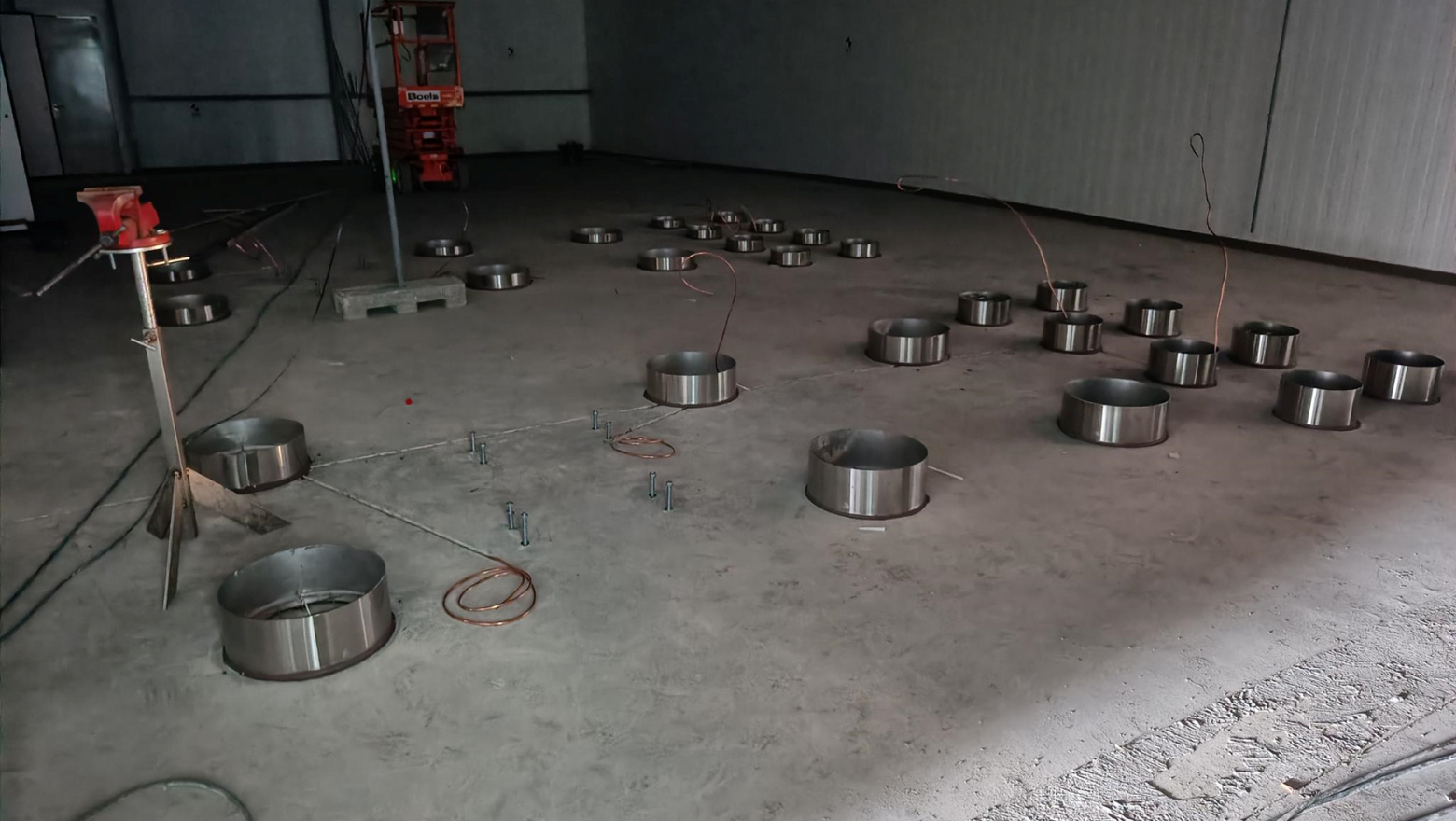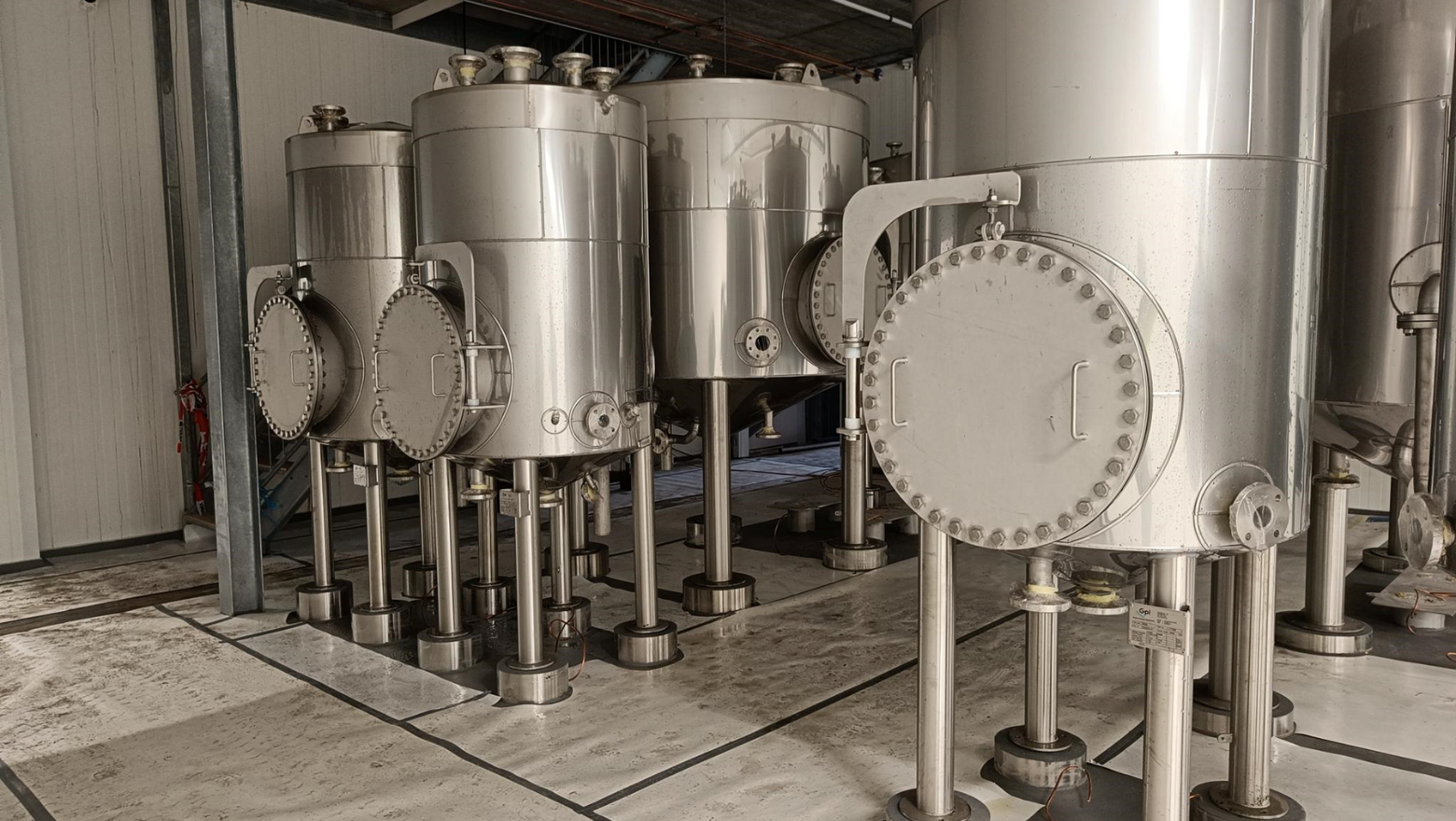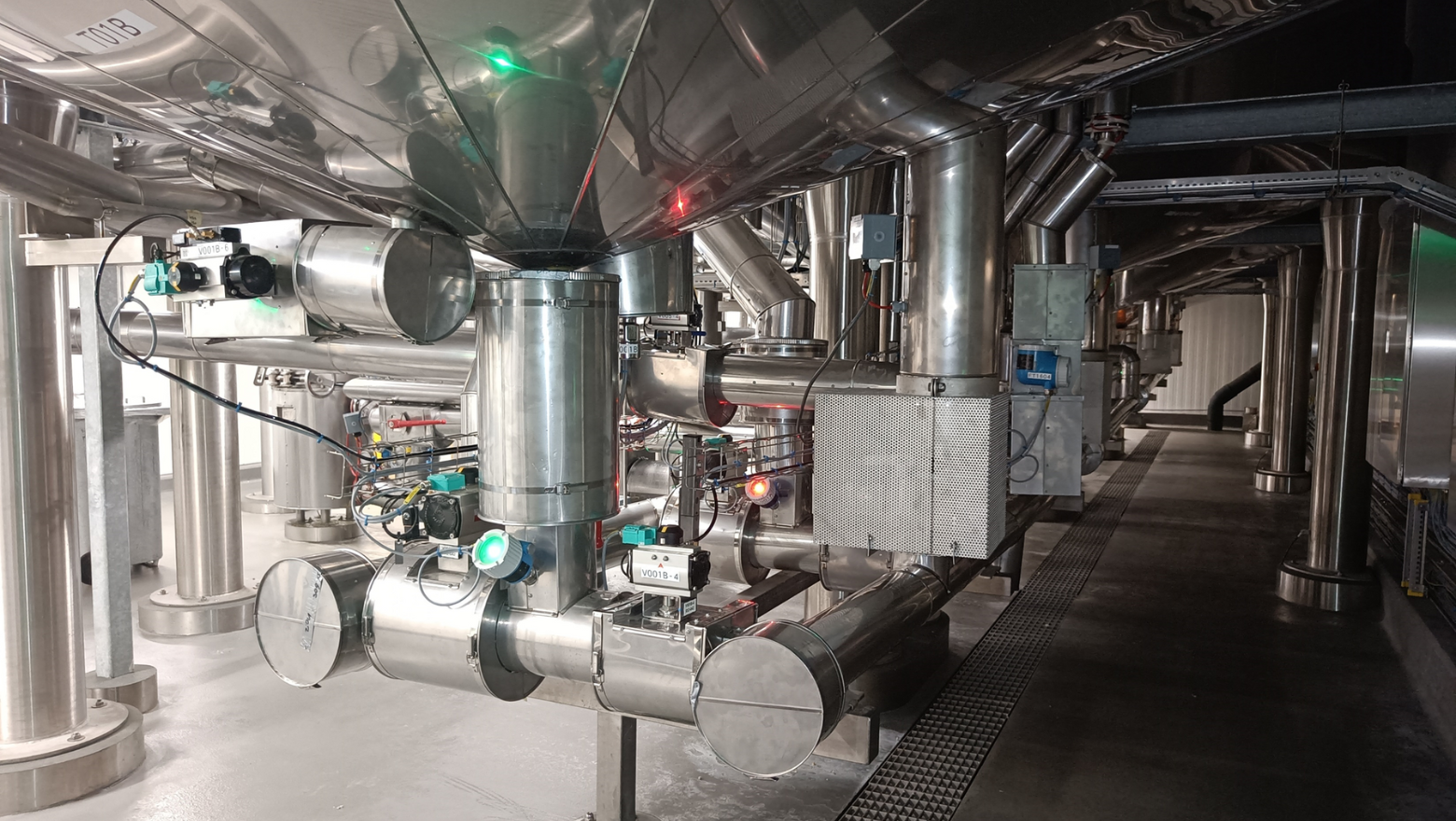Olenex is an international company that processes vegetable oils and fats. It focuses mainly on the food industry in Europe and Switzerland. Lybover has been working for this company for a long time, as well as for parent company Archer Daniels Midland (ADM). In 2019, for instance, Lybover METAL provided the piping works for a new process plant at Olenex’s Rotterdam refinery. In 2022, the request came for piping works at a new packaging plant of speciality fats to be built in Zaandam (Netherlands). A new construction project with very short deadlines requiring flawless coordination between all contractors on site? A challenge that Lybover gladly rose to. Thanks to the smart use of innovative digital tools and prefab construction, everything went smoothly.
For this project, Lybover METAL colleagues were allowed to pull out just about all their techniques and solutions. The Olenex request included mechanically engineering, producing and installing 86 supports for storage tanks and pumps, a pipe rack above the tank farm, food-grade piping in stainless steel for edible oils, piping for cold and hot process water, piping for compressed air and nitrogen, vent piping and supporting structures. All in all, about 2 kilometres of piping. Pre-engineering started in 2022 and the actual installation took place in 2023. In August the same year, the plant was already awarded FSSC 22000 food safety certification. “Thanks to meticulous pre-engineering based on intense collaboration with Raul Milla Perez, European Project Manager at Olenex, everything happened smoothly and efficiently. We are very grateful to Raul for the solution-oriented way he managed this project through very strict timing,” begins Bert Taghon, Project Engineer at Lybover METAL.
BIM as an enabling factor
To work out the entire piping installation, Lybover’s engineers were fortunately able to use Olenex’s BIM platform. In it, the architect loaded the plan of the building. Contractors also kept their detailed 3D models in it. “Everyone has up-to-date information this way, as modifications are immediately visible to all users,” says Bert Taghon. “The big advantage of the BIM platform is that we avoided a lot of problems already in the pre-engineering phase. Since we had data on the building, steel building structures, utilities, the sprinkler network and cable ducts, potential conflicts, some 650 in total, were immediately visible. This allowed us to address them right away rather than having them crop up during the works themselves. The BIM platform also helped us determine where the openings for the floor passages should be before the construction work started.”
VR: meeting in a virtual factory
Based on the BIM platform and a Piping & Instrumentation Diagram, Lybover engineers designed a 3D model of the pipelines in Plant3D during the pre-engineering phase. That model came about through consultation with the customer in virtual reality. To ensure precision down to the last millimetre, Lybover made 3D scans of the new building on site, aligning them with the BIM model. Thanks to all this data and modelling, it also became possible to walk through the new facility in VR, and at 1:1 scale. This also gave the client’s maintenance and HAZOP (Hazard and Operability) teams practical insight into the preliminary design.
“We made great use of VR in this project,” explains Bert Taghon. “We were able to walk through the plant together from anywhere in the world and give the customer insight into the installation. Design discussions did not take place behind a screen via Teams. No, we met in VR, in the 3D model. It is much easier to show something in virtual reality than to sketch it on a screen, and ambiguities come to light immediately. In fact, you are completely immersed in a real-life representation of the design. Olenex was totally on board with the VR story. They covered a lot of miles in the virtual factory and used screenshots from the platform to clarify things for other contractors.”
Lybover’s assembly teams also made grateful use of VR. Bert Taghon: “Before they had even set foot on the yard in Zaandam, they had already virtually walked through the factory. So they knew what to expect. The chief mechanic also had a mobile VR set at his disposal. This allowed him to immediately have the 3D model to hand in case of questions. That model lives in the cloud, so the chief mechanic was working with the latest version of the design anyway.”
Prefab for efficiency gains
Before assembly could begin, the positions of the supports for all units had to be plotted on the floor. To do this as accurately as possible, Lybover used a robotic total station. The piping components themselves also still had reach their destination. As the distance between Lybover’s HQ in Waregem and the plant in Zaandam is 265 kilometers, they chose to work with prefabricated components. This was more cost-efficient than carrying out the works on site. And because less work was needed on site, there was less disruption to other contractors. In the end, fewer people on site also means more safety. Based on 3D scans of the factory, 450 prefabricated components were built in Waregem, after which they were assembled in Zaandam, again using the scans as reference./quote:
“The 3D scans gave us assurance that we were working with real measurements rather than those from the theoretical BIM. The prefab components themselves are plug-and-play, so to speak, so the actual assembly went very smoothly. And just as well, because the deadlines were very tight and there could be no production delays due to the relocation of operations from Hamburg. After all, we also had to provide the packing line with piping on time. In short: it was quite a challenge for our teams. But the project was delivered on the agreed day and certified. So our approach, with clever use of innovative tools, ensured another successful solution.”


